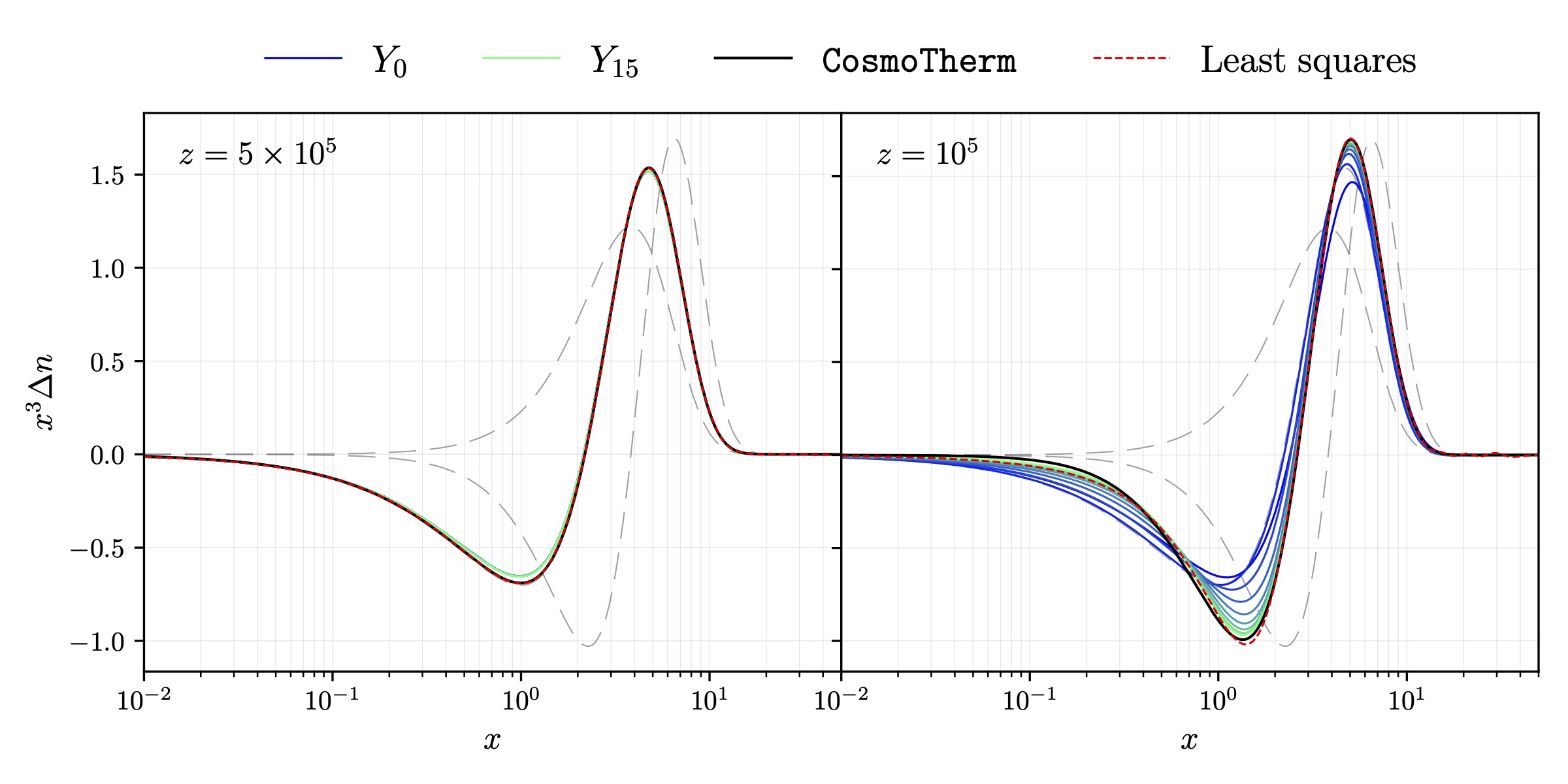Spectral-spatial distortion evolution

When thinking about CMB spectral distortions, we usually focus on the average sky signals. In a series of recent works we introduced a new method for computing spectral distortion anisotropies in the early-Universe. The method is based on a novel discretization of the thermalization Green's function, gaining a factor of ~1000 over the traditional Partial Differential Equation approach. This opens a novel way for obtaining a generalize Boltzmann hierarchy that can be solved using standard methods known from Boltzmann solvers such as CLASS and CAMB.
Fig. 1: A figure showing two characteristic time slices where the full solution is poorly approximated. At early times (left) the approximate basis still has an excessive contribution from a temperature shift. At later times (right) the different order of bases approach the residual distortion shape, but perform especially badly at low-frequencies. Also shown is a least-squares fit (red dotted line) using the 11 basis functions.
We provide several movies illustrating the results obtained with the method here. For numerical routines relating to the method please check back in the future. For publications related to this novel method see here:
Chluba, Kite & Ravenni, 2022 (arXiv:2210.09327)
Chluba, Ravenni & Kite, 2022 (arXiv:2210.15308)
Kite, Ravenni & Chluba, 2022 (arXiv:xxx)
For comments or questions please email: Jens@Chluba.de.

